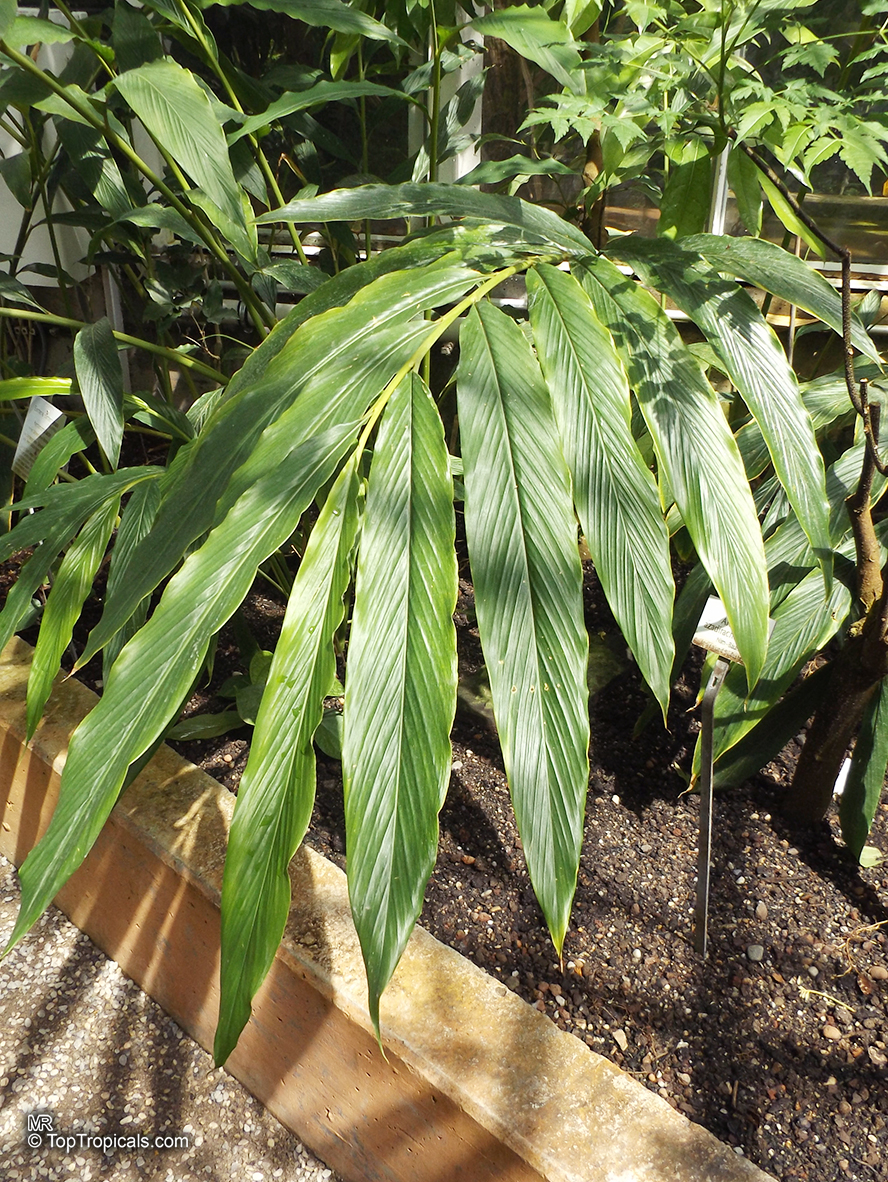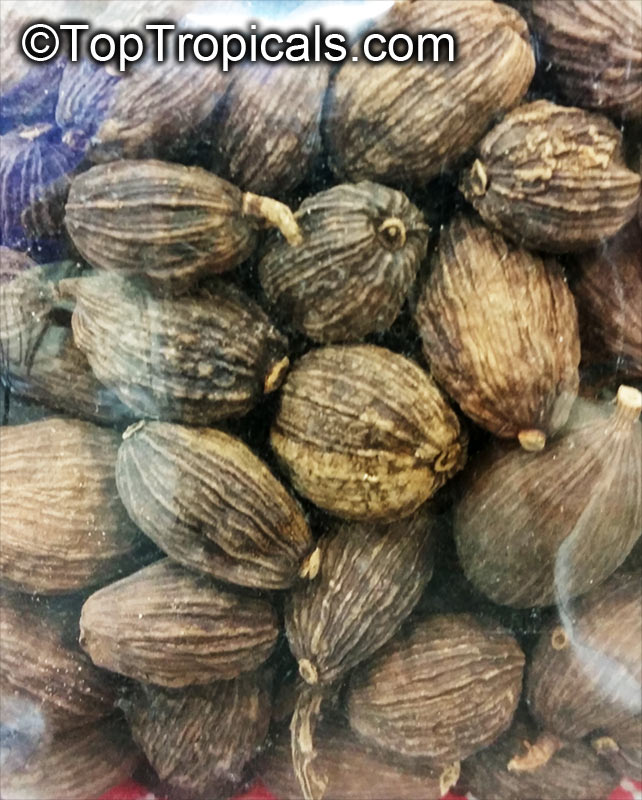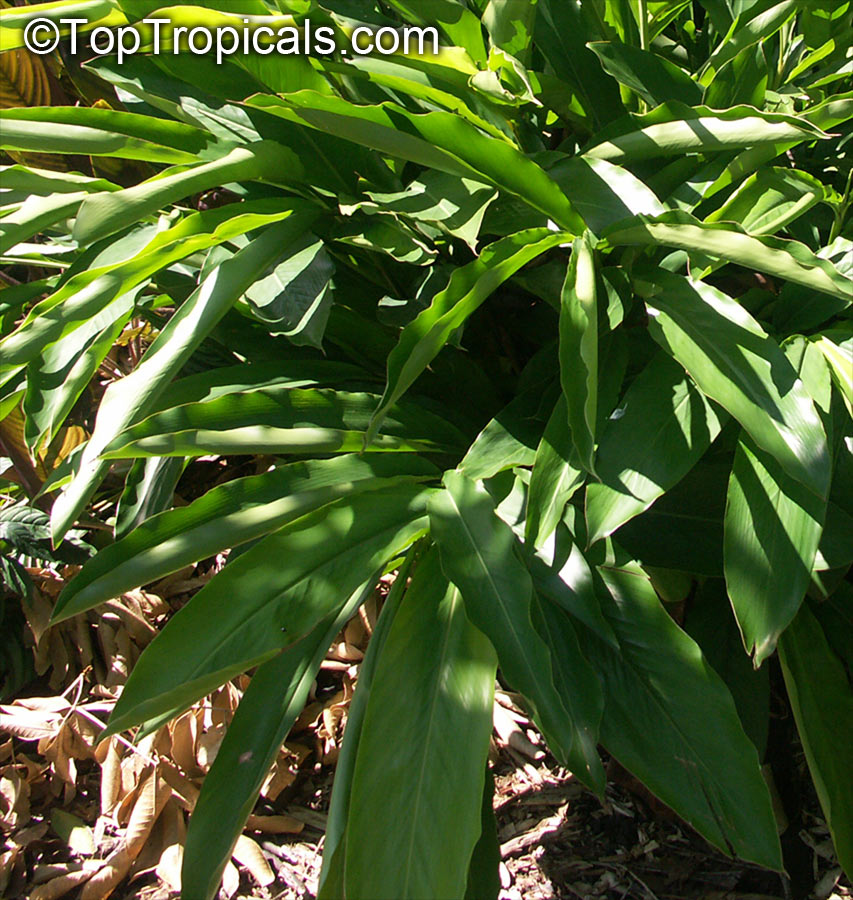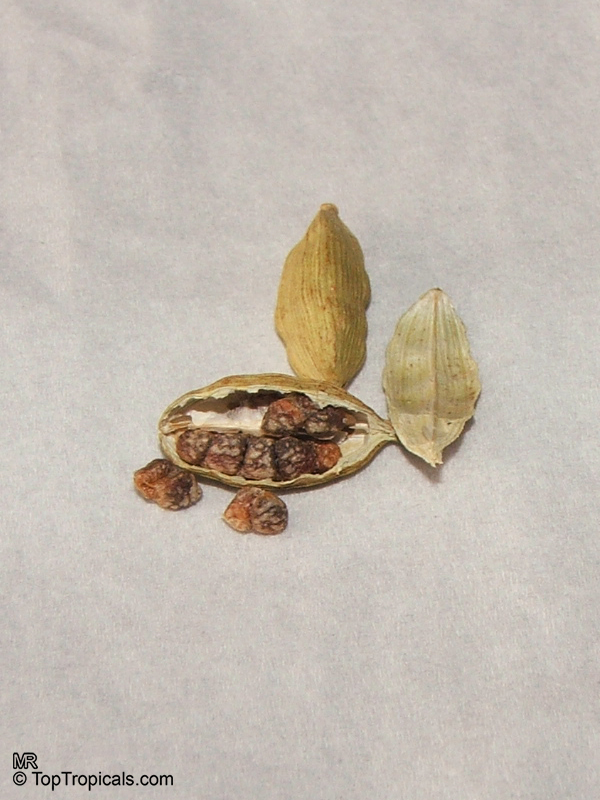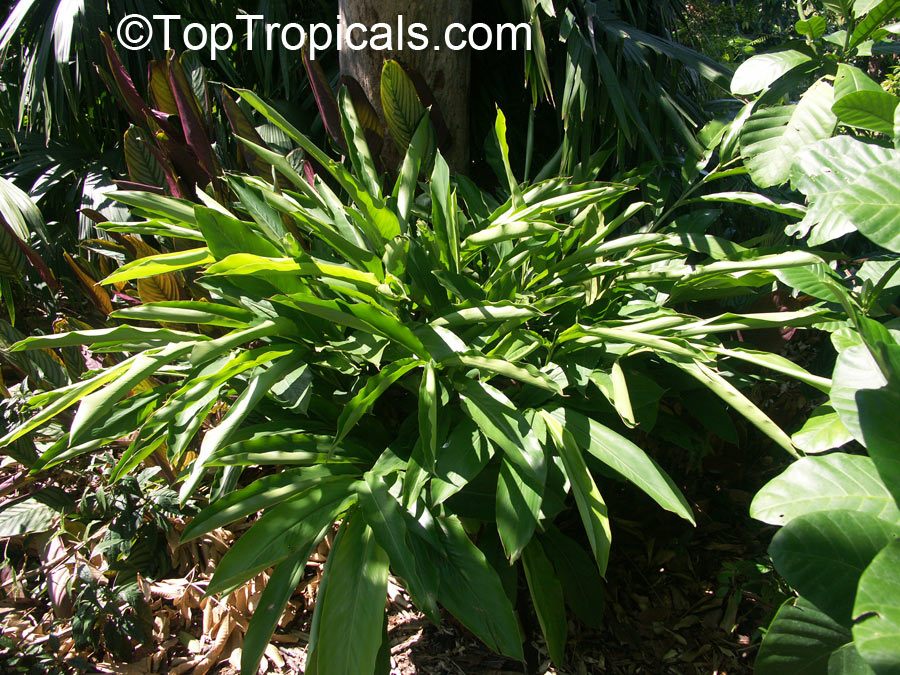Elettaria cardamomum (Cardamom)
Top Tropicals Plant Encyclopedia
Botanical name: Elettaria cardamomum
Common names: Cardamom, Malabar Cardamom, Ceylon Cardamom
Family: Zingiberaceae
Origin: India








Elettaria cardamomum, better known as Cardamom, is a small, bushy shrub native to Southwest India. It grows from two to five feet in height with a spread of around 18 inches. The plant benefits from light shade and regular watering. Its white or off-white colored flowers are fragrant and attractive to pollinators. It is a deciduous plant that prefers a humus-rich and acidic soil.
Cardamom is a useful spice or herb. It has a strong, savory flavor and is used to add a unique taste to both savory and sweet dishes. As a medicinal herb and dietary supplement, Cardamom is valued for its anti-inflammatory effects and healthy benefits. Cardamom contains numerous vitamins and minerals essential for optimal health.
The plant produces Cardamom fruits when it matures. These edible fruits are highly aromatic and contain numerous seeds inside. The seeds are the part most used for cooking. The aromatic husks of the fruits are used in some dishes and in teas. The fruit has a sweet, fragrant flavor and when dried can be used to help with digestion, reduce nausea, and relieve gas.
Cardamom prefers warm climates and is typically grown in USDA Zones 10-11. During the colder months, it can be grown in pots indoors. When grown in pots, it should be watered regularly and given light shade.
Overall, Cardamom is an attractive shrub with fragrant flowers, edible fruits, and an array of uses and health benefits. Its flavorful fragrance and ease of cultivation make it an attractive addition to the landscape.
